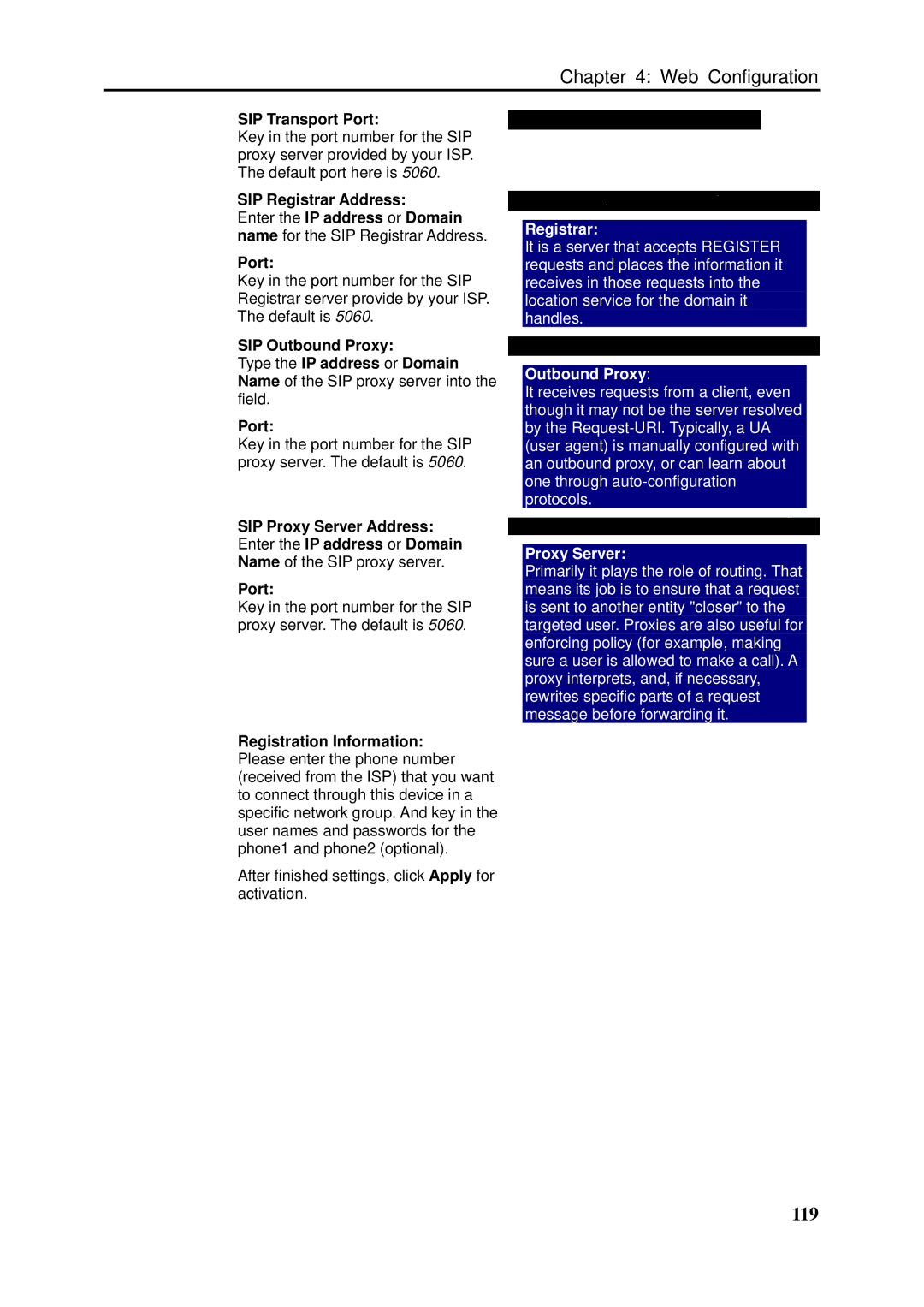
Chapter 4: Web Configuration
SIP Transport Port:
Key in the port number for the SIP proxy server provided by your ISP. The default port here is 5060.
SIP Registrar Address:
Enter the IP address or Domain name for the SIP Registrar Address.
Port:
Key in the port number for the SIP Registrar server provide by your ISP. The default is 5060.
SIP Outbound Proxy:
Type the IP address or Domain Name of the SIP proxy server into the field.
Port:
Key in the port number for the SIP proxy server. The default is 5060.
SIP Proxy Server Address: Enter the IP address or Domain Name of the SIP proxy server.
Port:
Key in the port number for the SIP proxy server. The default is 5060.
Registration Information: Please enter the phone number (received from the ISP) that you want to connect through this device in a specific network group. And key in the user names and passwords for the phone1 and phone2 (optional).
After finished settings, click Apply for activation.
Registrar:
It is a server that accepts REGISTER requests and places the information it receives in those requests into the location service for the domain it handles.
Outbound Proxy:
It receives requests from a client, even though it may not be the server resolved by the
Proxy Server:
Primarily it plays the role of routing. That means its job is to ensure that a request is sent to another entity "closer" to the targeted user. Proxies are also useful for enforcing policy (for example, making sure a user is allowed to make a call). A proxy interprets, and, if necessary, rewrites specific parts of a request message before forwarding it.
